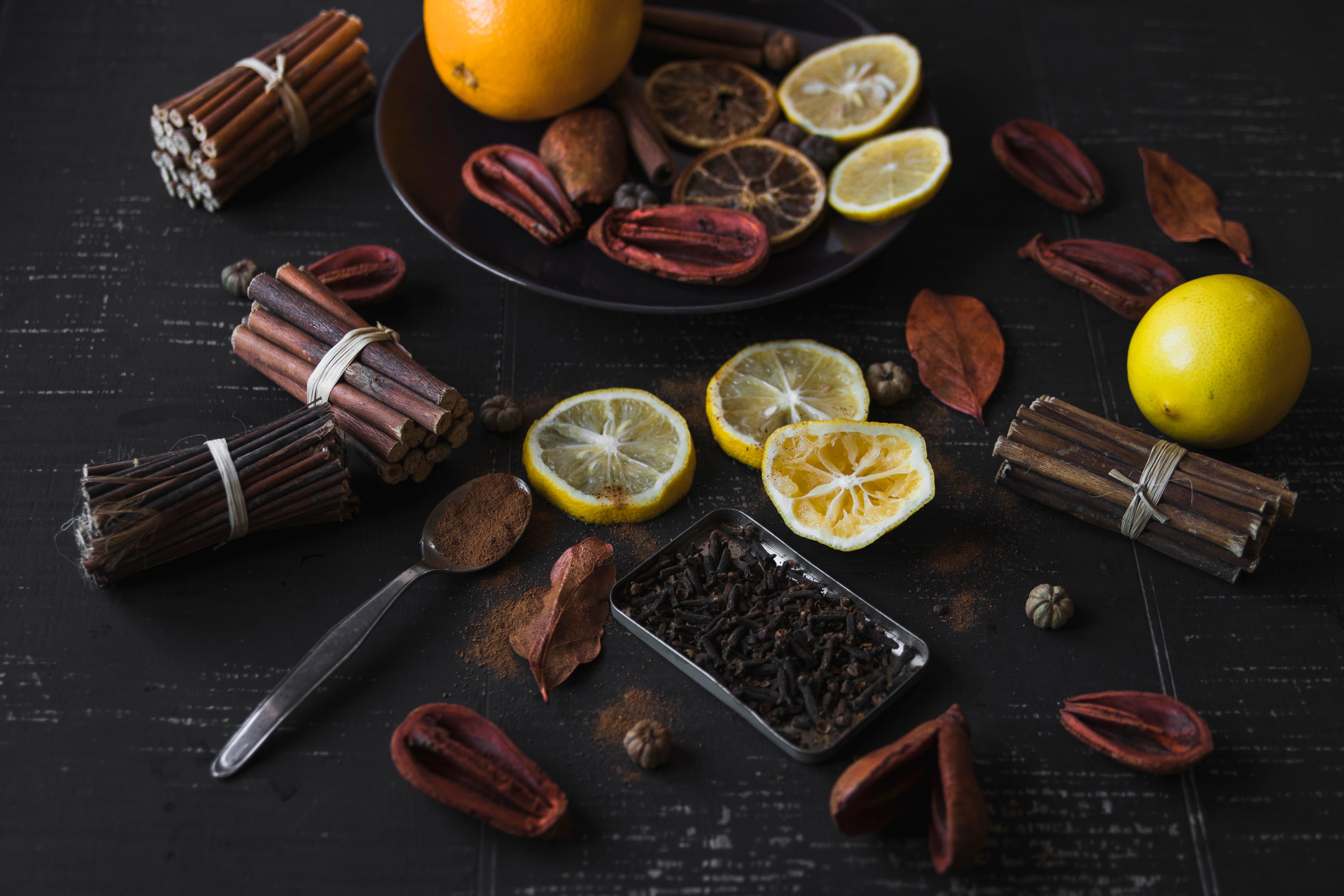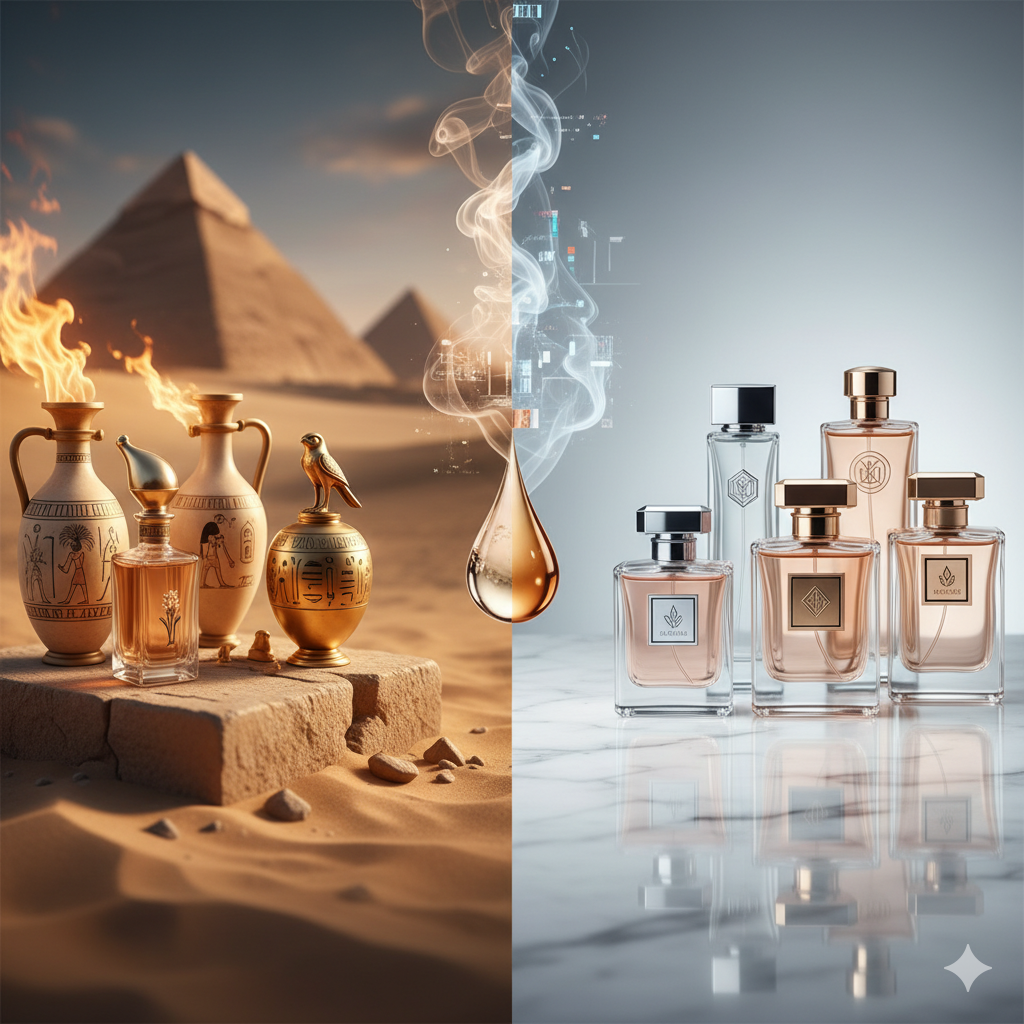The Science of Scent: How Perfume Molecules Interact with Skin and Air in Pakistan's Climate
Have you ever wondered why the same perfume smells different on different people? Or why your favorite fragrance changes throughout the day? The answer lies in the fascinating science of scent molecules and their unique interactions with your skin and the surrounding air.
Understanding Perfume Molecule Structure and Chemical Composition
Perfumes are complex mixtures of aromatic compounds dissolved in alcohol or oil. These fragrance molecules vary dramatically in size, weight, and chemical structure, which determines how they behave once applied to your skin.
When you spray perfume, you're releasing hundreds of different scent molecules into the air and onto your skin. Each molecule has a specific molecular weight that affects how quickly it evaporates—a property chemists call volatility. This single characteristic is responsible for the entire evolution of a fragrance from first spray to final fade.
The Fragrance Pyramid: Top Notes, Middle Notes, and Base Notes Explained
Professional perfumers design fragrances using a three-layer structure known as the fragrance pyramid. This isn't just marketing—it's pure chemistry in action.
Top Notes: Volatile Molecules and Chemical Structure (5-15 Minutes)
Top notes are the lightest, most volatile molecules in a perfume. These small molecules—typically with molecular weights between 154-165 daltons—evaporate within minutes of application.
Common top note ingredients include:
- Limonene (C₁₀H₁₆) - Found in citrus oils (bergamot, lemon, orange). Molecular structure: Cyclic monoterpene with a six-membered ring and two double bonds. Molecular weight: 136.23 g/mol
- Linalool (C₁₀H₁₈O) - Present in lavender and basil. Structure: Acyclic monoterpenoid alcohol with hydroxyl group. Molecular weight: 154.25 g/mol
- Citral (C₁₀H₁₆O) - Lemon grass oil component. Structure: Aldehyde with conjugated double bonds. Molecular weight: 152.23 g/mol
- α-Pinene (C₁₀H₁₆) - Pine and mint notes. Structure: Bicyclic monoterpene with four-membered ring. Molecular weight: 136.23 g/mol
- Aldehydes (C-8 to C-12) - Synthetic molecules like octanal (C₈H₁₆O), decanal (C₁₀H₂₀O). Structure: Straight-chain aldehydes with terminal CHO group
These molecules evaporate quickly because their small size and chemical structure allow them to break free from the liquid state easily. The moment you spray perfume, these molecules rush into the air, creating that immediate burst of scent that draws you in.
Middle Notes: Heart Notes Chemistry and Molecular Weight (20 Minutes - 3 Hours)
Also called "heart notes," these medium-weight molecules form the core character of a perfume. With molecular weights typically between 166-230 daltons, they evaporate more slowly than top notes.
Popular middle note ingredients:
- Geraniol (C₁₀H₁₈O) - Rose and geranium oil. Structure: Acyclic monoterpenoid with primary alcohol group. Molecular weight: 154.25 g/mol
- Phenylethyl alcohol (C₈H₁₀O) - Rose absolute component. Structure: Aromatic alcohol with benzene ring and ethanol chain. Molecular weight: 122.16 g/mol
- Linalyl acetate (C₁₂H₂₀O₂) - Lavender and clary sage. Structure: Ester formed from linalool and acetic acid. Molecular weight: 196.29 g/mol
- Benzyl acetate (C₉H₁₀O₂) - Jasmine note. Structure: Ester with benzyl group. Molecular weight: 150.17 g/mol
- Eugenol (C₁₀H₁₂O₂) - Clove and cinnamon. Structure: Phenylpropene with methoxy and hydroxyl groups on benzene ring. Molecular weight: 164.20 g/mol
- Cinnamaldehyde (C₉H₈O) - Cinnamon bark. Structure: Aldehyde with phenyl ring and conjugated system. Molecular weight: 132.16 g/mol
- γ-Decalactone (C₁₀H₁₈O₂) - Peach note. Structure: Ten-membered lactone ring. Molecular weight: 170.25 g/mol
Middle notes emerge as the top notes fade, providing a smooth transition that defines the perfume's personality. These molecules have more complex chemical structures, often containing additional functional groups that slow their evaporation rate.
Base Notes: Long-Lasting Fragrance Molecules and Fixatives (4-24+ Hours)
Base notes are the heaviest, least volatile molecules in perfumery. With molecular weights exceeding 230 daltons, these large, complex molecules can linger on skin for hours or even days.
Classic base note materials:
- Santalol (C₁₅H₂₄O) - Sandalwood's main component. Structure: Sesquiterpene alcohol with tricyclic system. Molecular weight: 220.35 g/mol
- Cedrol (C₁₅H₂₆O) - Cedarwood oil. Structure: Tricyclic sesquiterpene alcohol. Molecular weight: 222.37 g/mol
- Vetiverol (C₁₅H₂₆O) - Vetiver root. Structure: Complex sesquiterpene alcohol. Molecular weight: 222.37 g/mol
- Benzoin resinoid - Contains coniferyl benzoate (C₁₇H₁₆O₄, MW: 284.31 g/mol) and vanillin (C₈H₈O₃, MW: 152.15 g/mol)
- Patchouli alcohol (C₁₅H₂₆O) - Patchouli oil. Structure: Tricyclic sesquiterpene with tertiary alcohol. Molecular weight: 222.37 g/mol
- Vanillin (C₈H₈O₃) - Vanilla extract. Structure: Benzaldehyde with methoxy and hydroxyl substituents. Molecular weight: 152.15 g/mol
- Coumarin (C₉H₆O₂) - Tonka bean. Structure: Benzopyrone lactone ring system. Molecular weight: 146.14 g/mol
- Iso E Super (C₁₆H₂₆O) - Synthetic woody note. Chemical name: 1-(octahydro-2,3,8,8-tetramethyl-2-naphthyl)ethan-1-one. Molecular weight: 234.38 g/mol
- Galaxolide (C₁₈H₂₆O) - Synthetic musk. Chemical name: 1,3,4,6,7,8-hexahydro-4,6,6,7,8,8-hexamethylcyclopenta[g]-2-benzopyran. Molecular weight: 258.40 g/mol
- Ambroxan (C₁₆H₂₈O) - Synthetic ambergris. Chemical name: 3a,6,6,9a-tetramethyldodecahydronaphtho[2,1-b]furan. Molecular weight: 236.39 g/mol
These molecules evaporate so slowly that they provide the lasting impression of a fragrance. Their larger size and often more polar chemical structures create stronger interactions with skin proteins and oils, anchoring them to your body.
Skin Chemistry: Why Perfume Smells Different on Everyone
Your skin is not a neutral canvas—it's a dynamic, living organ with its own chemistry that dramatically affects how perfume smells on you.
Skin pH Levels and Fragrance Interaction
Human skin pH typically ranges from 4.5 to 6.5, slightly acidic to protect against bacteria. This acidity can interact with perfume molecules, especially those containing esters or aldehydes, causing them to break down differently from person to person.
People with more acidic skin may find that citrus notes fade faster, while floral notes become more pronounced. Conversely, those with more alkaline skin chemistry might experience enhanced longevity with woody and musky notes.
Natural Skin Oils (Sebum) and Perfume Longevity
The natural oils (sebum) your skin produces act as a fixative for fragrance molecules. Sebum primarily contains:
- Squalene (C₃₀H₅₀) - Triterpene hydrocarbon. Structure: Long-chain with six double bonds. Molecular weight: 410.72 g/mol
- Triglycerides - Esters of glycerol with fatty acids like palmitic acid (C₁₆H₃₂O₂, MW: 256.42 g/mol) and oleic acid (C₁₈H₃₄O₂, MW: 282.46 g/mol)
Oily skin tends to hold perfume longer because the fragrance molecules dissolve into these lipids, slowing their evaporation.
Dry skin, lacking this oily layer, allows molecules to evaporate more quickly. This is why perfume experts recommend applying fragrance to moisturized skin—the added oils help capture and release scent molecules more gradually.
Body Temperature, Pulse Points, and Fragrance Diffusion
Areas where blood vessels are closest to the skin surface—called pulse points—emit more heat. This warmth accelerates molecular movement and evaporation, creating a stronger scent diffusion.
Common pulse points include:
- Wrists
- Neck (sides and base)
- Behind the ears
- Inner elbows
- Behind the knees
The increased temperature at these locations helps volatilize fragrance molecules, creating a subtle scent cloud around you. However, excessive heat can cause perfumes to evolve too quickly, sometimes creating an imbalanced smell profile.
Skin Microbiome and Individual Scent Variation
Your skin hosts trillions of bacteria that form your unique microbiome. These microorganisms can enzymatically break down certain fragrance molecules, creating byproducts that alter the scent. This is one reason why the same perfume develops differently on different individuals—everyone's microbial community is unique.
How Perfume Molecules Interact with Air: Molecular Diffusion and Volatility
Once fragrance molecules leave your skin, they enter the surrounding air, where several factors influence how the scent disperses.
Molecular Diffusion
Perfume molecules move through air via diffusion—the natural tendency of molecules to spread from areas of high concentration to low concentration. Smaller, lighter molecules diffuse faster, which is why you smell top notes immediately while base notes remain close to the skin.
The rate of diffusion follows Fick's laws, meaning temperature, humidity, and air movement all affect how quickly scent spreads through a room.
Temperature and Humidity Effects on Perfume Performance
Warm air holds fragrance molecules better than cold air. Higher temperatures increase molecular kinetic energy, causing faster evaporation and wider diffusion. This is why perfumes seem stronger in summer than winter.
Humidity plays a complex role. Moderate humidity (40-60%) can enhance fragrance perception by keeping nasal passages moist, which improves olfactory sensitivity. However, very high humidity may cause some molecules to become "trapped" in water vapor, altering how they reach your nose.
Sillage: Understanding the Scent Trail and Fragrance Projection
Sillage (pronounced see-YAZH, from the French word for "wake") refers to the scent trail a perfume leaves behind. This phenomenon depends entirely on molecular behavior in air.
Perfumes with strong sillage contain higher proportions of medium-volatility molecules that evaporate steadily, creating a consistent scent cloud. Heavy base notes stay closer to skin (providing longevity), while very light top notes dissipate too quickly to create sillage. The sweet spot lies with those heart notes that hover in the air for extended periods.
Perfume Fixatives: Chemical Compounds That Extend Fragrance Longevity
Perfumers use fixatives—ingredients that slow the evaporation of more volatile components.
Natural Fixatives:
- Benzyl benzoate (C₁₄H₁₂O₂) - From Peru balsam. Structure: Ester with two benzene rings. Molecular weight: 212.24 g/mol
- Labdanum resinoid - Contains labdane diterpenes (C₂₀H₃₈)
-
Styrax - Contains cinnamic acid (C₉H₈O₂, MW: 148.16 g/mol) and cinnamyl cinnamate (C₁₈H₁₆O₂, MW: 264.32 g/mol)

Modern Synthetic Fixatives:
- Iso E Super (C₁₆H₂₆O) - Mentioned earlier, creates woody, velvety effects
- Ambroxan (C₁₆H₂₈O) - Ambergris replacement with exceptional longevity
- Ethylene brassylate (C₁₅H₂₈O₄) - Synthetic musk. Structure: Macrocyclic lactone. Molecular weight: 272.38 g/mol
- Cashmeran (C₁₄H₂₂O) - Chemical name: 1,2,3,5,6,7-hexahydro-1,1,2,3,3-pentamethyl-4H-inden-4-one. Molecular weight: 206.32 g/mol
These large molecules create hydrogen bonds and Van der Waals forces with smaller fragrance molecules, physically slowing their escape.
Practical Tips for Optimizing Your Fragrance Experience
Understanding perfume science helps you get the most from your fragrances:
- Apply to moisturized skin - Use an unscented lotion first to create an oily base that holds scent longer
- Target pulse points strategically - Apply to wrists and neck for everyday wear; add behind knees for evening events when you want stronger sillage
- Don't rub wrists together - This friction breaks up fragrance molecules and bruises the scent, causing top notes to dissipate prematurely
- Layer your fragrance - Use matching body products to build scent intensity gradually
- Store perfumes properly - Keep bottles away from direct sunlight and heat, which accelerate molecular degradation
-
Consider your skin type - If you have dry skin, apply to hair or clothing as alternatives (test first for staining)

Benefits of Understanding Perfume Science for Pakistani Consumers
Knowing how fragrance molecules work with your body offers several practical advantages, especially in Pakistan's unique climate and cultural context.
Enhanced Value for Money
In Pakistan, where quality perfumes and attars can be a significant investment, understanding molecular behavior helps you maximize every bottle. By applying perfume correctly to pulse points and moisturized skin, you can extend wear time from 4-6 hours to 8-12 hours, reducing the need for reapplication.
Better Fragrance Selection for Pakistan's Hot and Humid Climate
Pakistan's hot and humid weather, particularly in cities like Karachi, Lahore, and Hyderabad, accelerates perfume evaporation. Understanding volatility helps you choose fragrances with stronger base notes (oud, sandalwood, amber) that perform better in warm conditions. These traditional Middle Eastern and South Asian ingredients are readily available in Pakistani perfume markets and withstand heat better than light citrus scents.
Improved Skin Health
Knowing your skin chemistry prevents reactions and irritation. Many people in Pakistan have oily skin due to the climate, which actually helps perfume last longer. However, understanding pH balance helps you avoid fragrances with high alcohol content that can dry out or irritate skin, especially during summer months.
Cultural and Professional Appropriateness
In Pakistani workplaces and social settings, understanding sillage helps you wear fragrance appropriately. Light application with knowledge of molecular diffusion ensures you smell pleasant without overwhelming others during office hours, family gatherings, or mosque visits.
Cost-Effective Attar Layering and Local Perfume Shopping in Pakistan
With knowledge of fragrance notes, you can layer affordable local attar oils (like rose, jasmine, or mogra) with international perfumes, creating unique blends that last longer while supporting Pakistani perfume artisans in cities like Karachi's Jodia Bazaar or Lahore's Anarkali.
Drawbacks and Challenges of Perfume Chemistry in Pakistan
While understanding scent science is beneficial, there are some practical challenges to consider, particularly in the Pakistani context.
Climate-Related Faster Evaporation in Karachi and Lahore
Pakistan's tropical and subtropical climate means top and middle notes evaporate 30-50% faster than in cooler countries. The intense summer heat in Sindh and Punjab can cause even quality perfumes to fade within 2-3 hours, requiring frequent reapplication and increasing costs.
Karachi's High Humidity Impact on Fragrance Sillage
Karachi's high humidity (often 60-80%) can make fragrances smell heavier and more cloying. The moisture in the air traps fragrance molecules close to your body, sometimes creating an overwhelming effect. Light, fresh scents that work beautifully in dry climates may become suffocating in Karachi's monsoon season.
How Pakistani Diet Affects Skin Chemistry and Perfume Smell
The Pakistani diet, rich in spices, can affect body chemistry and alter how perfume smells. Key compounds that influence scent:
- Allicin (C₆H₁₀OS₂) - From garlic. Structure: Sulfoxide with disulfide linkage. Molecular weight: 162.27 g/mol
- Allyl methyl sulfide (C₄H₈S) - Garlic/onion metabolite released through skin. Molecular weight: 88.17 g/mol
- Capsaicin (C₁₈H₂₇NO₃) - Chili compound. Structure: Vanilloid with long alkyl chain. Molecular weight: 305.41 g/mol
- Curcumin (C₂₁H₂₀O₆) - Turmeric component. Structure: Diarylheptanoid with phenolic groups. Molecular weight: 368.38 g/mol
These foods change skin pH and the compounds released through perspiration, sometimes clashing with certain fragrance notes, particularly florals and light citrus.
Perspiration and Sweat Chemistry Challenges in Hot Weather
In Pakistan's hot weather, increased sweating can break down perfume molecules differently. Sweat contains:
- Urea (CH₄N₂O) - Organic compound. Molecular weight: 60.06 g/mol
- Lactic acid (C₃H₆O₃) - Alpha-hydroxy acid. Molecular weight: 90.08 g/mol
- Ammonia (NH₃) - Volatile alkaline compound. Molecular weight: 17.03 g/mol
- Various amino acids like leucine (C₆H₁₃NO₂, MW: 131.17 g/mol) and valine (C₅H₁₁NO₂, MW: 117.15 g/mol)
These compounds can react with aldehyde and ester groups in perfumes, sometimes creating unpleasant combinations. Synthetic musks and heavy oud fragrances can become particularly intense when mixed with perspiration, requiring careful selection and application.
Higher Costs for Quality Products
Understanding perfume science often leads to preference for higher-quality fragrances with better-formulated molecules. However, imported designer perfumes in Pakistan carry heavy import duties and taxes, making them expensive (often 50-100% more than international prices). This creates a gap between knowledge and affordability.
Storage Difficulties
Pakistan's frequent power outages and lack of climate control in many homes make proper perfume storage challenging. Heat and light exposure degrade fragrance molecules, reducing longevity and altering scent profiles. Many Pakistani households lack cool, dark storage spaces ideal for perfume preservation.
Limited Access to Specific Ingredients
While Pakistan has excellent local attar and oud suppliers, certain modern synthetic molecules and niche fragrance ingredients are difficult to source locally. Those interested in DIY perfumery or specific fragrance types may struggle to find ingredients without expensive international shipping.
Counterfeit Perfume Products in Pakistani Markets
The Pakistani market, particularly in major shopping areas like Saddar Karachi or Liberty Market Lahore, has widespread counterfeit perfumes. Understanding molecular science doesn't help identify fakes by smell alone, and these products often contain harmful chemicals that can damage skin or cause allergic reactions.
Best Perfume Selection Tips for Different Cities in Pakistan
Given our unique climate challenges, here are specific recommendations with chemical insights:
For Karachi's Humidity: Choose woody, spicy, or oud-based fragrances containing:
- Agarwood compounds: α-agarofuran (C₁₅H₂₄O), sesquiterpenes with high molecular weights
- Eugenol (C₁₀H₁₂O₂) - Clove/spice notes that resist humidity
- Patchouli alcohol (C₁₅H₂₆O) - Heavy base that anchors in moisture
Avoid very sweet or powdery scents containing ethyl maltol (C₇H₈O₃, MW: 140.14 g/mol) or heliotropin (C₈H₆O₃, MW: 150.13 g/mol) that become cloying.
For Lahore's Dry Heat: Winter options: Limonene (C₁₀H₁₆) and linalool (C₁₀H₁₈O) based citrus-aromatic blends Summer options: Santalol (C₁₅H₂₄O), cedrol (C₁₅H₂₆O), and ambroxan (C₁₆H₂₈O) for longevity
For Northern Areas: In cooler regions like Islamabad, Murree, or Gilgit-Baltistan, lighter molecules perform well:
- Geraniol (C₁₀H₁₈O) and phenylethyl alcohol (C₈H₁₀O) for florals
- Hedione (methyl dihydrojasmonate, C₁₃H₂₀O₃, MW: 224.30 g/mol) for fresh jasmine notes
For Monsoon Season: Opt for concentrated formulations with high-molecular-weight fixatives:
- Iso E Super (C₁₆H₂₆O)
- Cashmeran (C₁₄H₂₂O)
- Cetalox (another name for Ambroxan, C₁₆H₂₈O)
The Future of Fragrance Science
Modern fragrance chemistry continues to evolve. Scientists are developing:
- Encapsulation technology - Tiny capsules that release fragrance molecules gradually throughout the day
- Pro-fragrances - Inactive molecules that convert to fragrant compounds when exposed to specific conditions like sweat or light
- Biocompatible molecules - Fragrances designed to work harmoniously with skin chemistry rather than simply sitting on top of it
These innovations promise perfumes that adapt to individual body chemistry, providing personalized scent experiences.
Conclusion
The science of scent is a beautiful intersection of chemistry, biology, and art. Every time you spray perfume, you're conducting a complex chemical experiment where volatile molecules evaporate at different rates, interact with your unique skin chemistry, and diffuse through the air to create a signature scent experience.
Understanding these molecular interactions helps you appreciate why perfume is so personal and why finding the perfect fragrance is about more than just liking how it smells in the bottle. It's about how those molecules dance with your individual chemistry to create something entirely unique.
The next time you choose a fragrance, remember: you're not just selecting a scent—you're choosing molecules that will interact with your body's chemistry to tell your unique olfactory story.







